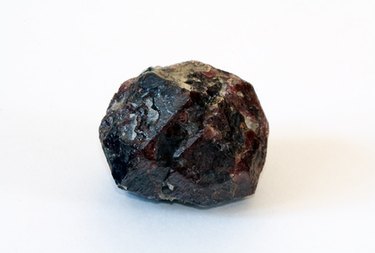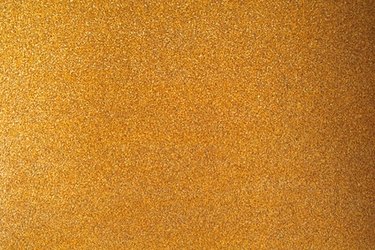
Garnet is known most commonly as the dazzling, red-hued gem that is the birthstone for the month of January. In truth, garnet refers to a group of minerals found throughout the world, existing in many colors and used not only as gemstones, but also, when crushed, as industrial abrasives. Ground garnets can become the main ingredient of the high-quality sandpaper, or "glass paper," known as garnet paper.
Abrasive Papers
Video of the Day

Sandpaper and glass paper are used to polish, smooth and finish wood, as well as many other building materials. Garnet paper is an example of a glass paper and is created by crushing the minerals to different powder, or "grit," consistencies and adhering the resulting grit to some kind of backing paper or cloth.
Video of the Day
Grades
Garnet paper, like all glass paper and sandpaper, is produced in different "grades" that vary from very coarse to very fine, depending upon how much or how little the mineral is ground. Because of its natural hardness, it is considered to be more durable than either sandpaper or quartz paper
Primary Uses
Garnet paper has many uses in furnituremaking and furniture restoration. However, DIYData points out that it is especially effective in smoothing hardwoods and carrying out fine finishing jobs.
Availability
Garnet paper is available from woodworking, hardware and tool suppliers throughout North America and can be used manually or with power tools. According to the Mineral Information Institute, the main sources of the mineral itself are the United States, Australia, China and India.
Popularity
Although garnet paper is still a top choice among woodworkers as a finishing and smoothing tool, there are many craftspeople who are also opting for abrasive papers made with synthetic grit, such as aluminum oxide and silicon carbide. These synthetics are more expensive than garnet paper, but according to sources such as DIYData, many consider them to have superior durability and more versatility.